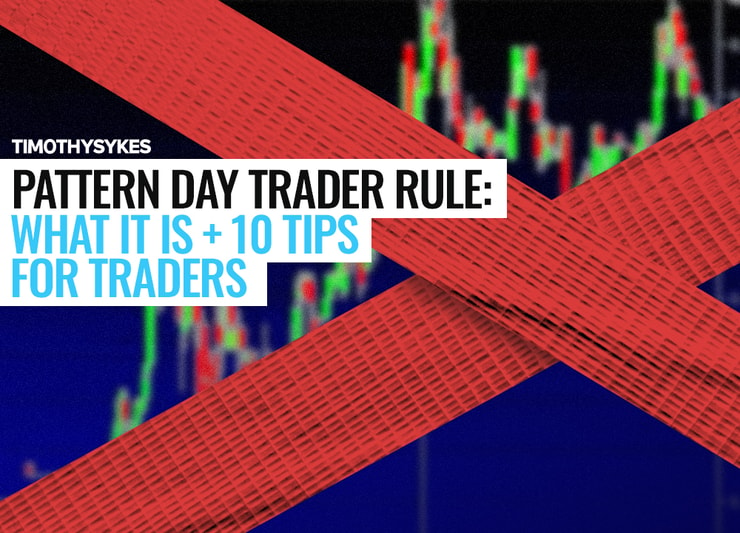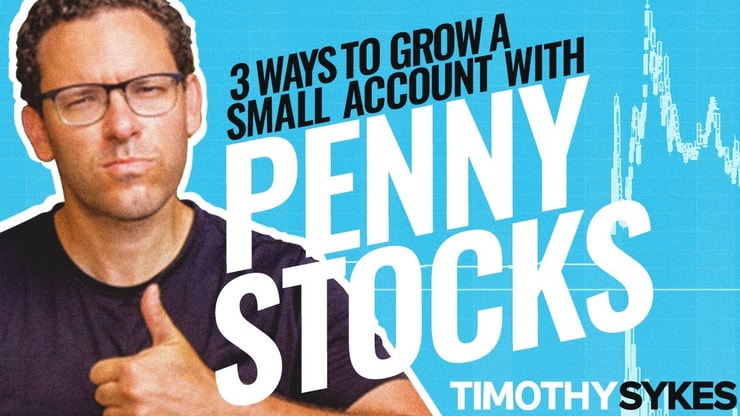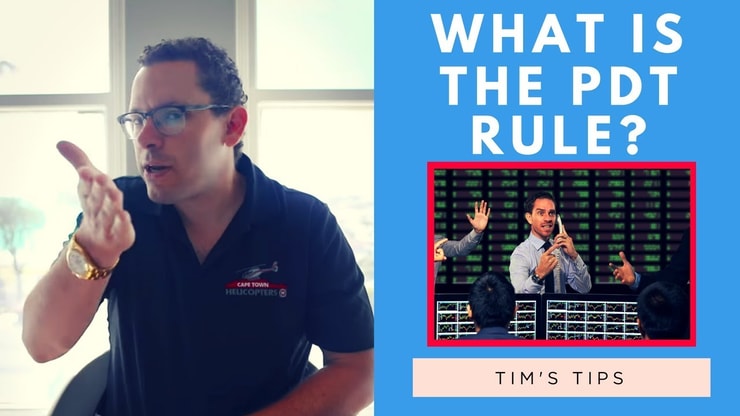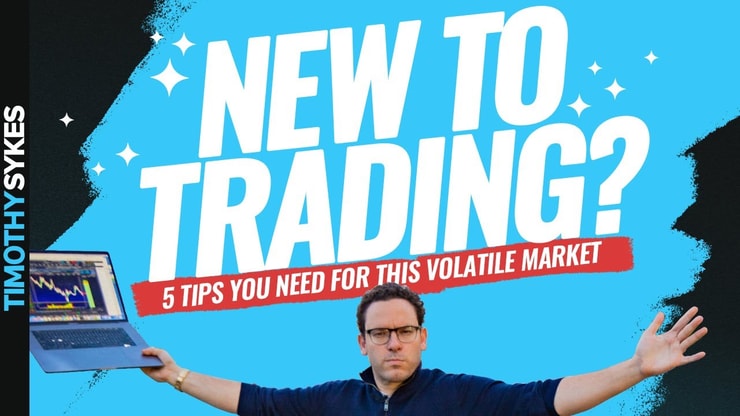A pattern day trader is a stock market trader who executes four or more day trades in five business days using a margin account. That last part is key: in a margin account. Under the FINRA rules, pattern day traders must maintain at least $25,000 in their trading accounts.
The pattern day trader (PDT) rule is extremely misunderstood. I get questions about it a lot. Do you really need $25,000 to day trade?
That’s a ton of money, right? I didn’t start my trading journey with that much … I had about half that.
So, what’s a day trader to do?
First, don’t make assumptions. Yes, the pattern day trader rule is real, but I think it’s actually a good thing.
New to penny stocks? You can start by studying my free penny stock guide.
Now, I want to cut through the nonsense the unethical brokers and penny stock haters like to spread…
First, there’s the claim that you can’t short sell penny stocks (yes, you can — you just need the right broker to buy stocks). Then there’s the myth that you need to trade all day every day to get rich (nope, that’s how you make your broker rich). Or there’s that PDT rumor … this one says you need $25,000 to trade stocks.
None of these claims are true. So, from now on, I’ll forward this post to anyone who spreads those lies. And everyone (from Shaquille O’Neal to Justin Bieber) knows I’ll do it.
Let’s get into the pattern day trader rule (PDT) and what it means for your trading.
Table of Contents
- 1 What Is a Pattern Day Trader?
- 2 What Is the PDT Pattern Day Trader Rule?
- 3 Example of Pattern Day Trading
- 4 My Tips for Following the Pattern Day Trader Rule
- 4.1 1. Don’t Use Leverage
- 4.2 2. Don’t Make More Than Three Day Trades a Week (Especially If You’re a Newbie)
- 4.3 3. Focus on the 80/20 Rule
- 4.4 4. Set Strict Goals
- 4.5 5. Be Prepared for the Stock Market
- 4.6 6. Only Trade One Timeframe
- 4.7 7. Journal Your Trades
- 4.8 8. Don’t Follow Trade Alerts
- 4.9 9. Prepare a Watchlist
- 5 Is Day Trading Illegal?
- 6 Frequently Asked Questions About the PDT Rule
- 7 Bonus Tip: The Trading Challenge
- 8 The Bottom Line About the PDT Rule
What Is a Pattern Day Trader?

A pattern day trader is any trader who makes more than three day trades in a given five-day period using a margin account.
Pattern day traders must follow a specific rule (PDT Rule) — they must maintain at least $25,000 in their trading accounts.
If you make more than three day trades and end up with less than $25K, there are consequences. More on that in a bit.
What Is the PDT Pattern Day Trader Rule?
Under the FINRA rules, a trader must maintain a minimum account balance of $25,000 on any day that the customer day trades. The required minimum must be in the trader’s account by the closing bell (4 p.m. Eastern) the day the trader makes fourth day trade.
So, yes, you need $25,000 for “day trading activities.” But that’s only if you fit the definition of a pattern day trader.
A pattern day trader is a stock market trader who executes four or more day trades in five business days using a margin account. That last part is key: in a margin account.
As for the $25K, the confusion comes from the U.S. regulators who instituted the much-maligned rule.
First, understand that brokers want you to trade all the time. That’s how they make money — when you trade. And to ‘freely’ trade all the time, you need $25,000.
But I don’t think you should listen to what your broker says. You can start with a small account. My top student Tim Grittani started with just $1,500 in his trading account. Now he’s up well over $11 million in trading profits — and still going.**
(**These results are NOT typical. Roughly 90% of traders lose. Always remember trading is risky, and never risk more than you can afford.)
Margin Account vs. Cash Account
Before I go further, you need to understand what a margin account is.
In a margin account, all your cash is available to trade without delay. That means if you exit a position at 10:30 a.m., that money is available to enter a new position at 10:31 a.m.
Margin accounts offer leverage. That’s basically a loan to increase your buying power — which can be very dangerous. I don’t recommend anyone trade with leverage.
Now, if you want to short sell, you’ll need a margin account. Personally, I think it’s better for new traders to go long first. Shorting is risky. Gain some serious market experience before you try it. Otherwise, you can get stuck in a short squeeze. You can blow up your account and even up owing money.
Back to margin accounts … They’re subject to the PDT rule.
With a cash account, it takes your cash two days to settle after trading. If you exit a trade at 10:30 a.m. on Monday, that cash will be available for trading first thing Wednesday morning.
With cash accounts, there’s no leverage, no short selling, and, most notably, no PDT rule.
Day Trading Requirements
To place a day trade, the only real requirement is that you have a brokerage account with some money in it.
A day trade means you buy and sell (or short and cover) a position on the same calendar day.
Anyone can make a day trade. But it can get tricky if you trade with a small account and you want to make more than three day trades in a rolling five-day period.
More Breaking News
- GRI Bio’s Latest Breakthrough in Fibrosis Treatment Boosts Stock: Is This a Game-Changer?
- HDFC Bank Leans Into International Ambitions with New Singapore Branch: What’s Next?
- DNN Stock Ride: Are the Recent Gains Just the Beginning?
Pattern Day Trade Rule
Again, I think the PDT rule is a good thing. The PDT rule is designed to help new traders. Over time I’ve come to embrace it. Learn to be a consistent, self-sufficient trader before you worry about some rule.
What Happens If You Break the PDT Pattern Day Trader Rule?
The rule includes a lot of limitations…
First, a day trade is when you buy and sell (or short and cover) shares of stock on the same calendar day. That includes trading premarket and after-hours.
But if you hold your position overnight, the transaction is no longer considered a day trade.
The PDT rule does NOT limit you from making more than three trades per week. You can hold a stock overnight every night. Margin accounts are limited on intraday trading.
Second, four trades per week can be a LOT. I encourage my students to focus on the best setups. Those don’t always come around a lot unless we’re in a volatile market like now. Even then, if you’re a newbie, more than three trades per week can be a lot.
So what happens if you break the PDT rule? Your account is subject to a margin call.
You’ll need to deposit enough cash to get your account over the $25K limit. If you don’t, your account will be restricted for 90 days. Some brokers may allow you to hold overnight positions, while others won’t allow you to trade at all.
Remember, the rule only applies if you’re using a margin account. If you’re using a cash account, you don’t need to worry about the rule.
Day Trade Limit: Minimum Equity of $25,000
Let’s say you open a margin account and intend to make four or more intraday trades in a week. I caution you against it, but many traders ignore me.
In this case, you’ll need to maintain a minimum balance of $25,000 in your account to stay compliant with the PDT rule.
Warning: most brokerages will push you toward a margin account when you make your initial deposit. I highly recommend you start with a cash account. New traders should avoid shorting and leverage. Keep it simple in the beginning — there’s so much to learn.
Get a solid start on your trading education before you make a single trade — read “The Complete Penny Stock Course” by my student Jamil. (I wrote the forward.)
Day Trading Rules Under $25K
If you have an account with less than $25,000 in it, you can still day trade…
Yep, using a cash account. You’re not using leverage and your activity doesn’t fall under the rule. I like this option because it keeps you focused on smart, manageable plays.
I’ve got more ways to trade with a small account at the end of this post.
Example of Pattern Day Trading
There are several situations in which the pattern day trader rule will apply. Let’s explore one…
Let’s say you open a margin account with a broker and deposit $10,000.
- On the first day, a Monday, you buy and sell shares of AAPL. This is a one-day trade.
- On Tuesday, you buy and sell AAPL. And on Wednesday, you short TSLA. These count as your second and third day trades.
- Thursday comes around, and you buy and sell shares of AAPL again. This is your fourth day trade.
That’s four day trades in four days — you meet the criteria of a pattern day trader.
In this scenario, you need to get your account up to $25K to abide by the FINRA guidelines. Otherwise, your margin account will be suspended.
My Tips for Following the Pattern Day Trader Rule
Not gonna lie … I used to hate this rule. Over time, though, I’ve embraced it.
I get it. It’s tough to watch the market sometimes and not trade. If that’s you, I encourage you to study. Practice restraint … You won’t last long in the market without self-control.
I trade like a retired trader, and I only come out of retirement for the very best plays. You should do the same. Wait for the perfect setup and then strike.
Got it?
Let’s look at some of my best tips for new traders:
1. Don’t Use Leverage
Using leverage can be a quick way to lose all your money.
If you don’t open a margin account at all, you don’t have to worry about the PDT rule. Instead, use a cash account and focus on only the best setups.
2. Don’t Make More Than Three Day Trades a Week (Especially If You’re a Newbie)
This is a smart rule period. It’s easy to overtrade. I know because I tend to overtrade.
Don’t force trades. Don’t chase. And don’t ‘revenge’ trade. Wait for the right setups and trade like a sniper. And if a trade goes against you, get out. Cut your losses quickly — that’s rule #1.
3. Focus on the 80/20 Rule
In the stock market, this rule means that about 80% of your profits ideally come from 20% of your trades.
Does that scare you? It should. Again, learn to trade only the best setups for your strategy.
4. Set Strict Goals
If you don’t have goals, you won’t have anything to work toward. Think about what you want to accomplish through day trading.
Before you pull the trigger on any trade, ask yourself if you’re willing to put your goal on the line for this trade. If the answer’s no, stop and reassess. It’s OK to not trade. Another setup will always come along.
5. Be Prepared for the Stock Market
Research, education, and preparation are everything when it comes to trading. If you’re unfamiliar with the stock market, start by building your knowledge account.
I provide a lot of info on penny stocks right here on this blog. I release new YouTube videos nearly every day. You have tons of opportunities to learn. No excuses.
6. Only Trade One Timeframe
By limiting your trading time to a specific time period, you can become more knowledgeable about that time period. Learn more about the top times to trade here.
I think it’s smart for new traders to focus on the open. Then spend midday studying if you have the time. And at the close, you can look for overnight plays since they don’t count as day trades.
If you’re trading a margin account with less than $25,000, focus on either the open or the close until you grow your account.
7. Journal Your Trades
Throughout your trading career, it’s important to note what works and what doesn’t. Use Profit.ly to journal your trades. It’s how you can track your progress over time.
Use this data to focus on the trades that work.
8. Don’t Follow Trade Alerts
Never follow trade alerts from anyone, not even me. I send out watchlists and alerts to help my students learn my process.
But ultimately, you need to develop your own trading plan. You need to know when you will enter a trade and where to set profit goals or cut losses. Remember small losses are fine and small gains add up.
My trade alerts are designed for you to see my trades in real time. I’m teaching the process.
9. Prepare a Watchlist
Start by signing up for my free weekly watchlist. Every week, I’ll tell you what I’m watching in the market.
A watchlist helps you find and track a few stocks that meet your basic criteria. It helps you limit chaos throughout the trading day by allowing you to focus on a few promising stocks.
Is Day Trading Illegal?
There’s nothing illegal about day trading. Day trading simply refers to the practice of opening and closing a trade on the same day. That’s it.
Day Trading Laws
Other than basic securities law, there are no rules that govern how and when you can day trade. If you’re using a cash account, you can execute 20 trades per day. I don’t recommend it, but you have that right.
Is It Bad to Be a Pattern Day Trader?
By definition I’m a pattern day trader. I typically have five to ten day trades each week. It’s my preferred trading style.
So no, being a pattern day trader is not bad. I actually think it’s good. And trading penny stocks has allowed me to start with a small account and earn over $5 million in trading profits.**
You can read about my trading journey in “An American Hedge Fund” — it’s my free autobiography. Get your copy here.
(Please note: my results are not typical. I’ve spent years developing exceptional skills and knowledge. Always remember trading is risky. Never risk more than you can afford.)
Frequently Asked Questions About the PDT Rule
I get a lot of questions about the pattern day trader rule. I’ll answer them here so you can refer back as often as you need.
Does the Pattern Day Trader Rule Affect Short Sales?
Yep, the PDT rule applies to short selling, too. Going long or short a trade on the same day counts as a day trade.
Does the PDT Rule Apply to Day Trading Options?
Yes. If you open and close your position on the same day, it counts as a day trade.
Does The PDT Rule Apply Only If I Use Leverage?
No, you don’t need to use leverage to be subject to the PDT rule. If you have a margin account — regardless of whether you use leverage — you’re subject to the PDT rule.
What Happens If you Break the Pattern Day Trader Rule on Robinhood?
I don’t do customer support, so you’d need to contact Robinhood for that information. Every broker is different. Some may give you a warning the first time you break the rule. But if you break the PDT rule a second time, you can probably expect your broker to freeze your account. Again, check with your broker. And always know how many day trades you have left. Know and understand the rules of the game. Don’t let a small mistake blow up your entire account.
Is There a Workaround for the Pattern Day Trade Rule?
There are several workarounds for the PDT rule. Let’s take a look…
Cash Account
Should seem pretty obvious by now … but I recommend using a cash account. Stay away from using leverage.
Use Multiple Brokerages
The PDT rule is enforced by brokers, not regulators. If you trade with multiple brokers, each will allow you three day trades. So two accounts would give you six trades, and three accounts would give you nine…
But this spreads your funds thinner. Focus on proper money management. You can get around the PDT rule, but you’re missing the big picture. Your education and the process come first.
Trade Like a Sniper
Don’t chase every single pattern out there. Choose your trades wisely and wait for the perfect setup. If there’s a hot sector, like with coronavirus stocks, you can see a lot of opportunities. But usually, the best trades only come along a few times a week.
Offshore Brokerages
I don’t recommend anyone use offshore brokers. Period.
Bonus Tip: The Trading Challenge
I promised 10 tips. So here’s the last and best tip I can ever offer: get a trading mentor.
Apply for my Trading Challenge. I only want dedicated and committed students. It’s your opportunity to learn from me and my top students.
You can see the trades I make every day and learn why. Plus, you’ll have access to thousands of premium resources, from daily watchlists to live trading webinars.
My goal is to be the teacher to you that I didn’t have when I was learning. I can help you shorten your learning curve — if you’re willing to put in the hard work and study.
The Bottom Line About the PDT Rule
Day trading is one of the most exciting ways to make money in the world, and it comes with few restrictions. The pattern day trader (PDT) rule is the only regulation you need to worry about — and only if you’re using a margin account.
To learn the best day trading strategies and build your skills using proven methods, join my Trading Challenge. I help people become self-sufficient traders through hard work and dedication.
Like it or not the PDT rule is here to stay. The next choice is yours to make. Be defeated by this obstacle because this rule is unfair or overcome it and trade smarter.
I want to hear what you think … What do you think of the PDT rule? Leave a comment below!







Leave a reply